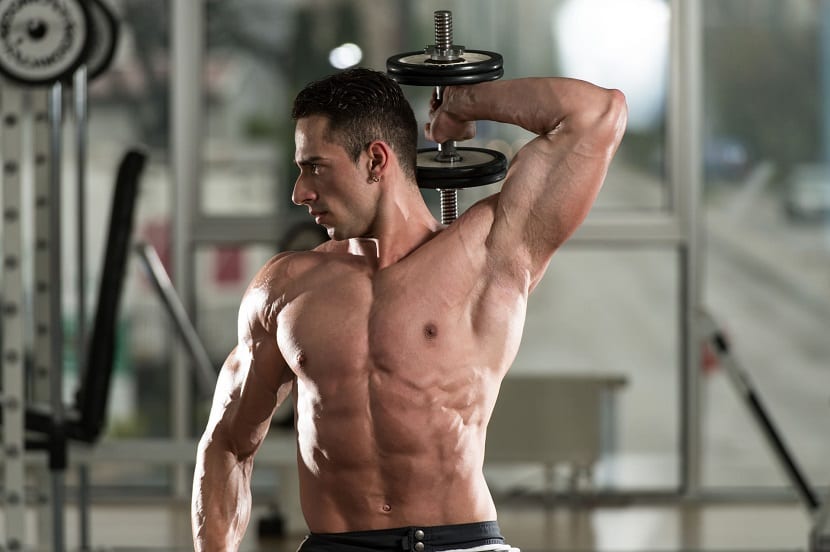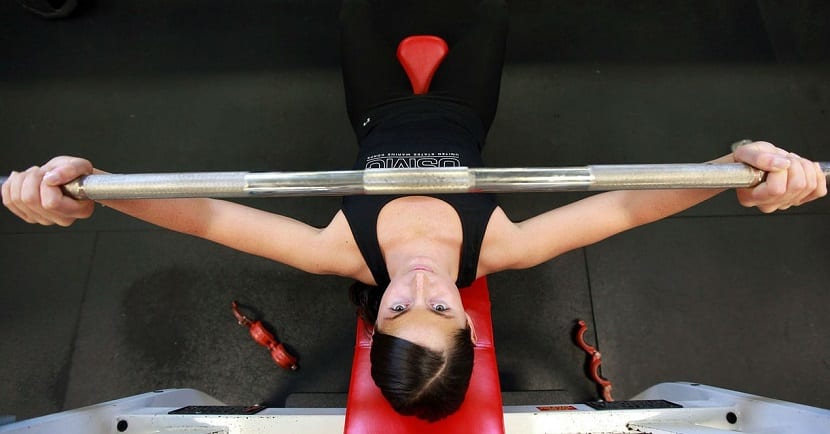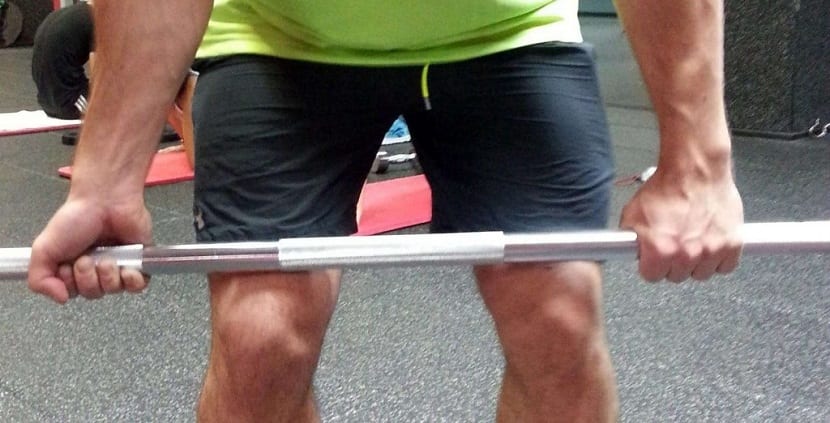
Neutral grip
When we go to the gym we observe our exercise routine and many times it seems that we are reading Chinese. The routine has the name of the exercise and the way you have to do it. The same exercise can vary the way the body acts simply by the type of grip you are using. Surely you have ever heard of supine or prone grip but you don't really know which is which and what difference is there between holding the barbell or dumbbell in one way or another.
In this article we are going to clarify your doubts about the supine or prone grip as well as tell you about the other types of grip that there are and the importance of each of them in order to improve performance. Do you want to solve your doubts about it? Keep reading to know more.
Grip function

Any exercise can modify the action it has on the muscle simply by changing the grip with which we grasp the dumbbell, the bar or the cable. The main objective of when we perform an exercise is to activate the muscle and give it a stimulus so that it can grow (see How to increase muscle mass). For our exercise to be well performed, apart from the correct performance of the technique, we must take into account the grip.
Although doing a barbell bicep curl we are going to work biceps, Depending on the grip with which we take the bar, it will work at different angles. This has a direct impact on the type of stimulus that we are giving the muscle and, therefore, on the results that we are going to obtain. The ideal is to activate and recruit the largest number of muscle fibers per exercise to consider an exercise as complete.
Also, another function that has the grip type it is related to the stability that is given to the exercise. There are exercises that, due to their characteristics, need to grip the bar in a certain way to increase stability and, after all, perform the technique well. On the other hand, we find exercises such as the bench press where the way of grasping the bar is more limited by posture and is defined by the type of exercise and effort to be performed.
Although it is thought that there are many types of grips, the most basic are only 3. From there, some derivative grips come out that serve on special occasions to improve performance, highlight the stimulus in more backward areas and to correct the technique.
Most frequent types of grips

Supine grip
The three basic types of grips out there are supine, prone and hammer or neutral grip. From there some derivatives of them are known that act in certain exercises. The most common is that they are mixed between supine or prone grip and not with the neutral one. We are going to analyze well what are the most frequent types of grabs.
- Supine grip. It is the one that is done when we place the palms of the hands up. Both to hold bars and dumbbells. It is the most used in exercises that work the biceps and deltoids. It can also be observed in other exercises.
- Prone grip. It is the opposite of the supine grip. In this case, the barbell or dumbbell is grasped with the palms of the hands facing downwards. It is a perfect grip to work the forearm at the same time as other muscles. It is used in exercises such as dorsal rows, chin-ups and traps, although it is also used for other types of exercises.
- Hammer or neutral grip. This is the one used for certain exercises where the palms of the hands are face to face. Hands are placed in parallel and is perfect for exercises such as bicep hammer curls, other contractor exercises and for the triceps.
- Alternate or mixed grip. This is the one we have mentioned that is a variety of the supine or prone grip. It is the combination of both where one palm of the hand is placed up and the other down. Although it is not very common in frequent exercises, it is used to give stability to the exercise in question. For example, this type of grip is used quite a bit in the deadlift.

Mixed grip used in deadlift
Importance of using the supine or prone grip

Prone grip
When we are in the gym we want to perform 100% and obtain the results in the shortest possible time. To do this, it is not enough to lift a lot of kilos and look like the strongest in the room. The most important thing is to perform the exercises with good technique. so that the muscle receives the correct stimulus and we avoid possible injuries.
It is important that let's not do all the exercises in our routine with the same grip. Something convenient to improve our ability to recruit fibers is that we improve those of the arm. At the end of the day, it is the main protagonist in thousands of exercises, even if it is not the muscle that is being worked. Returning to the example of the deadlift, when we hold the bar loaded with weight, even though we are working our legs and core, the arms act as a motor to lift the bar and also stimulate it.
If we vary the types of grips as we do the different exercises in our routine, we will be improving all the fibers that our arm has and we will obtain a better recruitment. Although the biceps and triceps exercises are always the same, if for example we work the biceps with a hammer grip, we will be placing more emphasis on the recruitment of the fibers of the outer part of the biceps. This comes in handy to get a better shape for our muscle.
On the contrary, if we perform triceps exercises with supine grip instead of prone, we will be working the internal fibers better and they will be able to develop more. The more variation there is in the exercises, the better results can be obtained.
Finally, we must remember that it is more important to perform a good exercise technique before the weight we are moving. Make sure you continue to perform the technique correctly whether you use the supine or prone grip.